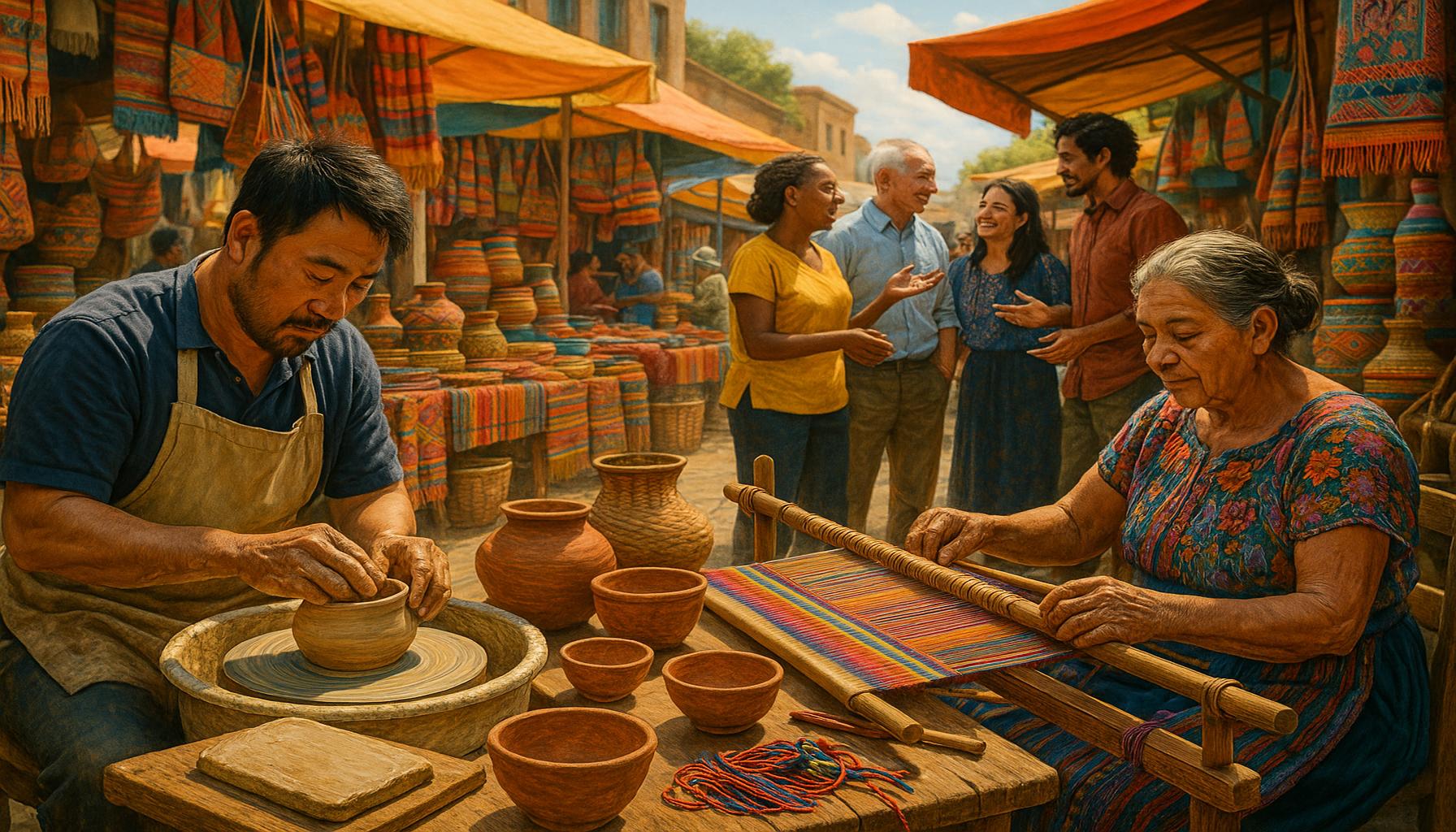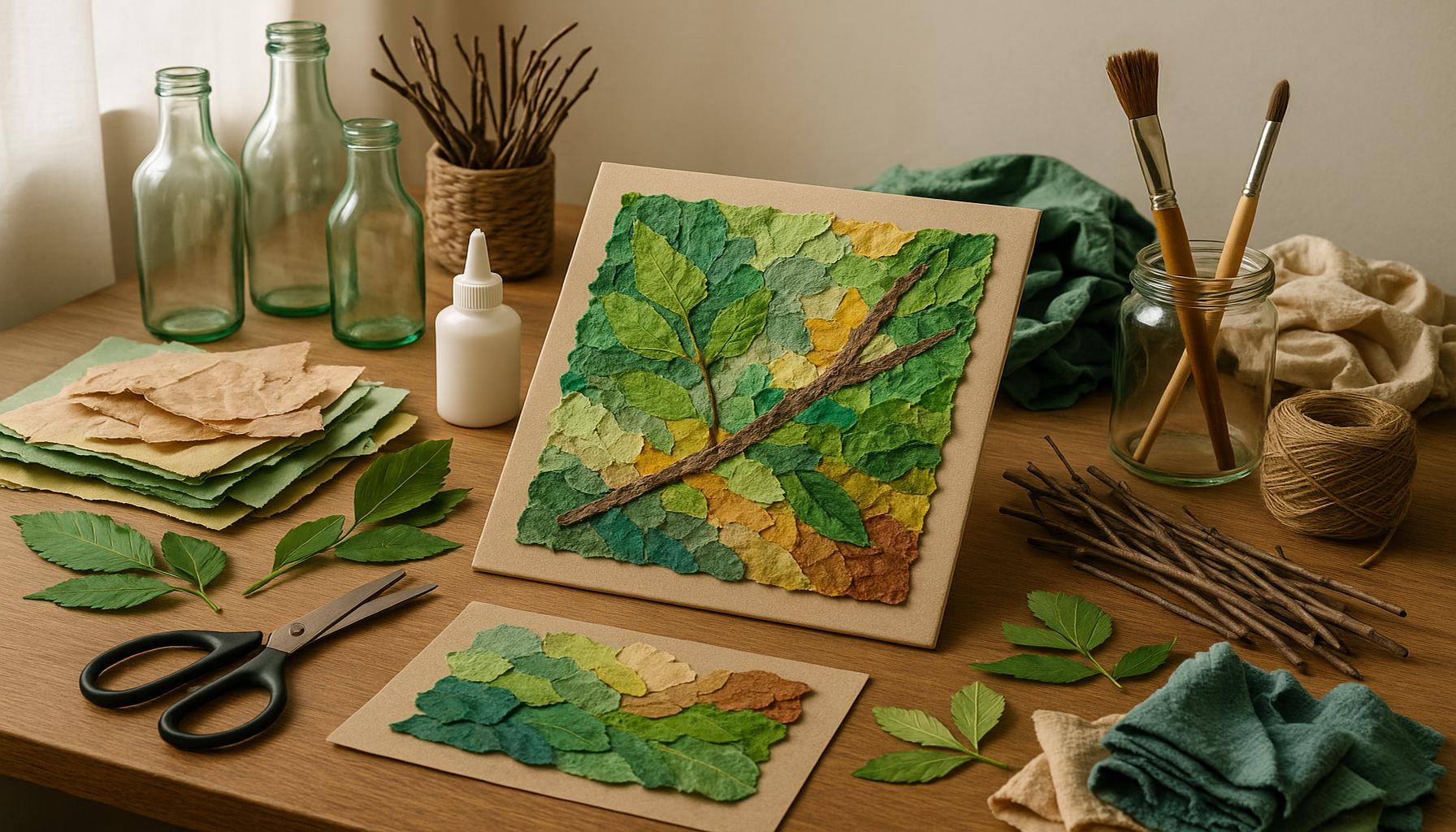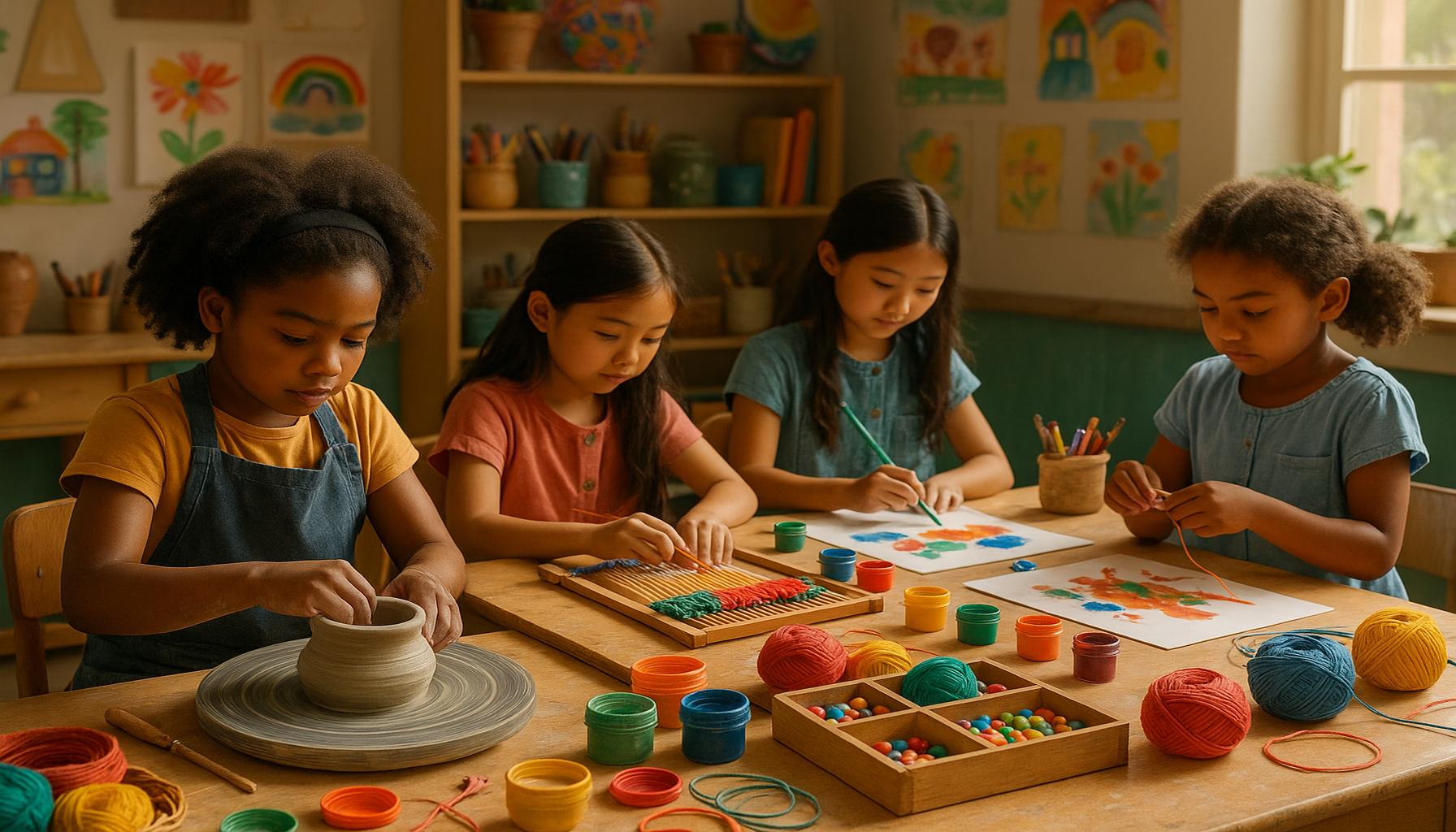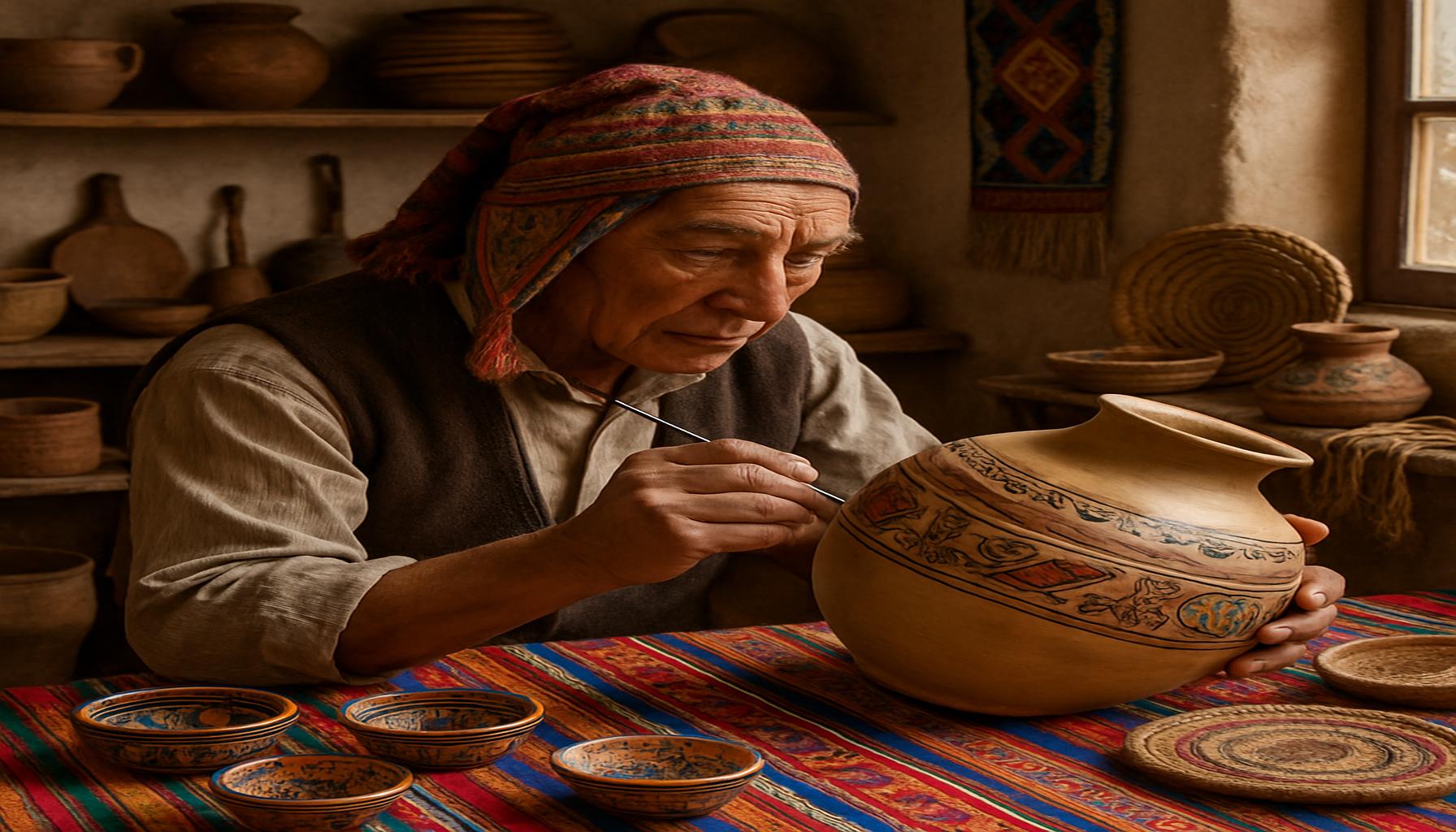The impact of handicrafts on the local economy: Stimulating trade and culture in communities

Exploring the Impact of Handicrafts on Communities
Far from being simply charming relics of the past, handicrafts occupy a powerful position in today’s economy and social fabric. The recent resurgence in interest has highlighted their role not just as artistic expressions, but as vital contributors to local economies and cultural integrity. By investing in local artisans and their crafts, communities have discovered a multifaceted tool for economic development and a means to preserve their unique cultural heritage.
The Economic Ripple Effect
Handicrafts can initiate a series of economic benefits that extend well beyond the initial sale of a product. This chain reaction can be observed in several key areas:
- Job Creation: Artisans naturally require assistance in various capacities, from production to marketing, leading to increased job opportunities within the community. This not only helps individuals financially but also fosters skills development among local workers.
- Increased Trade: Handmade goods possess unique stories and characteristics that often attract both tourists and residents. For example, rural areas in the United States, such as the Appalachian Mountains, have seen a tourist boom due to the allure of authentic handmade crafts like pottery and woven textiles, significantly increasing local sales.
- Support for Local Businesses: Handicraft production often involves local materials and suppliers. Whether it’s a pottery workshop sourcing clay from nearby riverbanks or a woodworking studio using locally-sourced timber, this reliance on local resources strengthens the regional economy by keeping money circulating within the community.
Preserving Cultural Heritage
Handicrafts serve as vessels of cultural identity, helping to maintain and celebrate unique community traditions. Their impact transcends mere economic benefits:
- Local Traditions: Each craft often embodies the history, beliefs, and customs of a community. For instance, Native American beadwork is not just artistic; it represents a deep cultural narrative that connects generations.
- Skills Transfer: As elder artisans pass on techniques to younger generations, they help to maintain cultural ties within the community. Workshops and apprenticeships are a great way to engage youth, ensuring that age-old techniques are not lost.
- Community Pride: Supporting local artisans cultivates a sense of ownership and pride in the community. When residents invest in local crafts, they not only promote economic development but also celebrate their unique identity, as seen through events like craft fairs and exhibitions.
The relationship between handicrafts and community growth highlights the potential for enriching local economies while reinforcing cultural bonds. By embracing handicrafts, communities can weave together stronger connections among residents, boost their economic outlook, and foster environmental sustainability in a world that’s increasingly homogenized. Engaging with local artisans can lead to discoveries that are both enriching and enlightening, paving the way for a future where local culture thrives.
DISCOVER MORE: Click here to dive deeper into the art of storytelling
Boosting Economic Resilience
Handicrafts not only embody the spirit of a community but also serve as a vital backbone for local economies. As local artisans gather resources and labor, they create **job opportunities** that foster long-term economic resilience. In many cases, these crafts not only provide direct employment for the artisans themselves but also stimulate job creation in ancillary industries such as retail, tourism, and transportation. Studies indicate that communities with vibrant handicraft sectors exhibit higher rates of employment and income stability.
The resurgence of interest in handicrafts has a significant impact on **local trade** , as handmade goods draw customers who are eager to support artisans rather than large-scale manufacturers. This shift in consumer behavior creates a favorable environment for small businesses, as demonstrated by Michigan’s growing market for locally-made artisanal beer, food products, and crafts. By promoting unique, locally-sourced goods, local economies can cultivate a sustainable trade ecosystem that thrives on community support.
Fostering Sustainable Practices
In addition to stimulating local trade, handicrafts encourage communities to adopt **sustainable practices**. Artisans often utilize locally-sourced materials, which not only strengthens the local supply chain but also reduces the environmental impact associated with long-distance shipping. For instance, the use of reclaimed wood in furniture crafting has gained traction in states like Oregon, where artisans creatively repurpose materials that would otherwise end up in landfills. This commitment to sustainability resonates with consumers increasingly concerned about environmental issues, thereby creating a niche market where consumers favor eco-friendly products.
Encouraging Tourism
The appeal of handicrafts has a profound effect on **tourism**, transforming local artisans into cultural ambassadors. Tourists flock to areas known for their distinctive handicrafts, driving both foot traffic and revenue. Markets, galleries, and workshops often become essential stops on a traveler’s itinerary. Cities like Asheville, North Carolina, have capitalized on this phenomenon, hosting annual craft fairs that attract thousands of visitors eager to explore local artistry.
Handicraft tourism creates a symbiotic relationship between tourists and residents, stimulating the local economy by injecting money into restaurants, hotels, and entertainment venues. Local artisans increasingly adopt online platforms to reach a broader audience, allowing them to showcase their work to potential customers beyond their immediate geographic location. By harnessing the power of e-commerce, artisans can share their stories and unique products globally, further enhancing community visibility and economic viability.
In essence, the impact of handicrafts extends far beyond individual sales, supporting multifaceted economic growth. By emphasizing **job creation**, **sustainable practices**, and **tourism**, communities can utilize handicrafts as a transformative tool that enriches their local economies while preserving cultural integrity. The world is beginning to recognize the value found in handcrafted goods, and as such, local artisans find themselves at the forefront of promoting both trade and cultural heritage in their communities.
Handicrafts play a pivotal role in the local economy, affecting not just individual artisans but entire communities. These products often reflect the unique cultural heritage of a region, serving as a bridge between tradition and modernity. When local handicrafts are embraced, they invigorate the local economy by creating job opportunities, promoting entrepreneurship, and attracting tourism. One significant advantage of fostering a handicraft industry is its capacity for **stimulating trade**. Local artisans engage in the production of goods that are not only sold within the community but can also appeal to broader markets. This demand boosts sales, enabling artisans to generate sustainable income. The spiral effect is tangible; increased income leads to greater local spending, creating a positive feedback loop that bolsters various sectors, from retail to hospitality.Furthermore, handicrafts serve as an extraordinary medium for **cultural preservation**. Each handcrafted item tells a story and embodies the values, beliefs, and history of a community. The promotion of these arts ensures that traditional techniques and knowledge are passed down through generations. By integrating the cultural narrative into the fabric of economic activities, communities can enhance their identity and pride, which can lead to stronger social cohesion.The combination of trade and cultural reinforcement through handicrafts not only fosters economic sustainability but also enhances local identity, ensuring that cultural practices continue to thrive amidst globalization. This interplay can also encourage partnerships between local artisans and larger markets, enabling artisans to gain better visibility and traction for their products while enriching the cultural landscape of the community.Embracing the potential of handicrafts can, therefore, catalyze a renaissance of local economies and cultural richness that resonates well beyond the borders of a community. By supporting artisans and their crafts, we invest in an intricate network of **cultural and economic growth,** ultimately benefiting society as a whole. As individuals and organizations recognize the importance of handicrafts, they become active participants in this vital transformation, creating a vibrant nexus of trade that weave cultural narratives into a sustainable economic tapestry.
DISCOVER MORE: Click here to learn how art can elevate your mental well-being
Strengthening Community Identity
The role of handicrafts extends beyond economic metrics; they play a significant part in shaping and strengthening community identity. Handcrafted goods often tell stories and reflect the cultural narratives of the places they originate from. Each piece is imbued with local traditions, techniques, and histories, making them invaluable cultural artifacts. For instance, Native American artisans produce intricately beaded jewelry that not only serves as a source of income but also preserves and promotes their rich cultural heritage. This connection between handicrafts and identity fosters pride within the community.
Moreover, communities that actively support handicrafts nurture a sense of belonging and unity. Events such as craft fairs and workshops provide platforms for local artisans to showcase their talents while encouraging community involvement. These gatherings not only bolster **local networking** but also serve as vibrant ecosystems where ideas are exchanged and collaborations blossom. In places like Santa Fe, New Mexico, the annual Indian Market brings together indigenous artists from across the region, creating opportunities for mentorship and cultural exchange that enrich the fabric of the community.
Innovating Through Collaboration
Handicrafts can also inspire innovation within local economies by fostering collaboration among artists, entrepreneurs, and local government. By pooling resources and expertise, artisans can break into new markets, utilize technology more effectively, and develop unique products that cater to a growing customer base. A noteworthy example is the “Maker Movement,” where individuals from various trades come together to create spaces known as makerspaces. These collaborative environments encourage tinkering and creativity, leading to the development of new handicraft techniques and products.
Additionally, partnerships between artisans and local businesses can create hybrid offerings that appeal to a wider audience. For instance, a local café might feature pottery made by a nearby artisan, not only enhancing the aesthetic appeal of the café but also supporting the artist financially. Many cities across the United States have adopted such collaborative models, providing a channel for artisans to reach more customers while promoting local culture.
Harnessing Digital Platforms
The digital age has added a new dimension to the handicraft movement, as artisans increasingly leverage online platforms to expand their reach. Websites like Etsy and social media platforms enable local craftsmen to sell their products directly to consumers around the world, breaking down geographical barriers. Recent studies show that businesses which utilize online sales channels report increased annual revenue, with 54% of small businesses experiencing growth through this digital transformation.
Furthermore, the ability to tell their story online allows artisans to cultivate a personal connection with their customers, enhancing brand loyalty. This phenomenon results in a vibrant marketplace that not only stimulates **trade** but also fosters cultural exchange as customers from diverse backgrounds discover and appreciate local crafts. The handcrafted movement is thriving in states like California, where artisans from various backgrounds showcase their crafts on platforms such as Instagram, helping to create a dynamic exchange of ideas and styles.
As communities embrace handicrafts, they unlock a wealth of opportunities for economic growth, cultural preservation, and innovation. By recognizing the interdependence of local economies, identity, and craftsmanship, communities can create a robust framework that supports and celebrates their unique heritage while paving the way for future generations.
DISCOVER MORE: Click here to dive into the world of musical composition
Conclusion
In conclusion, the impact of handicrafts on the local economy is profound and multidimensional. By serving as a vital economic engine, handcrafted goods stimulate trade, create job opportunities, and foster innovation within communities. As artisans embrace collaboration and leverage digital platforms, they not only expand their market reach but also forge connections that enrich both local and global cultures.
Furthermore, the cultural narrative encapsulated within each handcrafted item enhances community identity, promoting pride and unity among residents. Events such as craft fairs and workshops serve as vital communal hubs, allowing for the sharing of stories, techniques, and values inherent to a place’s heritage. This cultural engagement plays a significant role in creating a sense of belonging, making local artisans not just providers but custodians of community history.
As we continue to witness the evolution of handicrafts in response to changing consumer trends and technological advancements, it is essential to prioritize and support these artisans. By doing so, communities not only safeguard their unique cultural legacies but also position themselves for sustainable economic growth. It is clear that the handcrafted movement is more than a passing trend; it is a robust form of expression that stimulates both trade and culture, bridging the gap between past traditions and future opportunities. Exploring and engaging with local handicrafts can inspire individuals and communities alike to appreciate their unique heritage while fostering a thriving local economy.


